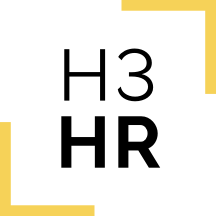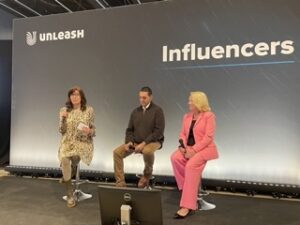Who's that Girl?
Evolving Views Of Change
Originally posted: May 9, 2011 on TrishMcFarlane.com
“We are chameleons, and our partialities and prejudices change place with an easy and blesses facility, and we are soon wonted to the change and happy in it.” ~Mark Twain
In order to be creative and drive change, we need to re-examine some of the same industry topics that have been discussed previously. It’s a time to think about how change comes about and how our actions can help drive greater adaptation and acceptance. It truly is an EVOLUTION where change is adopted slowly and it adapts to the needs of the individual, the organization, the economy, the barriers, and the technology.
One model I’ve come across many times throughout my sociological studies and in my career is Everett Rogers‘ theory on the Diffusion of Innovators. Rogers was a sociologist who, at the age of thirty, wrote that diffusion is, “the process by which an innovation is communicated through certain channels over time among the members of a social system.” Rogers basically demonstrated that change agents can be broken down into their rate of adoption. Here’s a common model of how that looks.
A Real-life Example
Having just completed another HRevolution, we receive questions about how the event fits into the Human Resource landscape. I have a few observations.
- There is a strong feeling that the excitement that comes with a less structured event will be able to drive the momentum for faster change in the industry. While I personally wish this were the case, it is not. As you can see on the curve, only 2.5% of people are truly innovators followed by the 13.5% of early adopters. I look at people in these two categories who seek out learning in a non-traditional format as the risk takers. These are the people who are helping create the pressure for change and they are the ones who can personally respond well to change. So in my opinion, people in the top 16% should really be seen as the people who are going to take new, innovative looks at old facts and come up with ideas to drive business efforts forward.
- The “early majority” are needing more facts. It’s not that they are adverse to change, they just need that little extra push in order to support and embrace the change. This group will need to either be persuaded to experience the change or they will need to see concrete examples of how a new approach can benefit them.
- What he labels “late majority” are really the group that needs to be shown WHY they need to get on board. They have numerous objections and will need many discussions to vet all the possible negative outcomes of the process. In my opinion, this is where many leaders fall. It’s not that they won’t change, you just have to provide a compelling case to nudge them in that direction. They may have more to lose when it comes to their credibility. However, get them in your corner and people will definitely notice.
- The last group is the “Over My Dead Body” group. If you need a barrier, here it is.
Regardless of what type of change you think is valuable to your organization, come at the problem with:
- A plan- Like any skilled business person knows, you have to have a well thought out plan and a business case to even get your toe in the door to start the discussion.
- Facts- Case studies and statistics to support the change initiative.
- Ability, influence, or power to articulate and persuade- If you don’t have any of these, you need to find someone in the organization who can help you fill this role. Look to the people you know who tend to be early adopters and convince them. Then, sell the idea to the powers that be.
- A backup strategy- What if it doesn’t work? What is the plan you can come back with that says you’ve already thought through several scenarios in which the change does not take hold?
What are other ways you can convince others to adopt innovative ideas you, or your team have? Please share them in the comments.
Author
Categories
Tags
Share
Related Posts
How we can help
Led by Trish Steed and Steve Boese, H3 HR Advisors harnesses over 40 years of experience to delivery HCM insights and guidance to global organizations.
H3 HR Advisory services
By leveraging technology, analytics, and our deep industry knowledge we can help you to reposition your workforce and ensure that you have the right people with the right capabilities in the right roles to positively impact the growth of your business.
HR Happy Hour Podcast Network
Created in 2009, The HR Happy Hour Show is hosted by Steve Boese and Trish Steed and is the longest continuously running internet radio show and podcast on Human Resources, HR Technology, Talent Practices, Workplace and Leadership topics.
H3 HR Speaking Services
We work closely with every client to customize your content - keynotes, webinars, research, infographics, and buyer’s guides - to inspire, educate and inform the audience enabling you to reset and realign your organization for a talent-led breakthrough.
Get in touch
Talk to us today and find out how we can help you and your organization leverage HCM technology to attract, onboard, retain and manage top talent.



